Top 15 Examples of Layer 2 Blockchains Explained
- BLOG
- Blockchain
- October 20, 2025
Layer 2 solutions help blockchains work better by adding extra layers on top of main blockchains. These layers process more transactions faster and cheaper than the main chain alone.
When we look at different examples of Layer 2 blockchains, we can see how they work in real life and what benefits they bring. Each example uses a different way to lower waiting time and cost, so blockchains can handle more users and apps easily.
In this article, we will explain the top 15 Layer 2 blockchain examples, how they work, and what makes them useful for real-world blockchain applications like DeFi, NFTs, and payments.
Contents
What is Layer 2 Blockchain?
Layer 2 blockchain refers to a secondary framework or protocol that is built on top of an existing layer 1 blockchain (like Ethereum, Bitcoin, etc.). The main goal of Layer 2 is to improve scalability and reduce transaction fees, without compromising the security and decentralization provided by Layer 1.
Think of it like:
- Layer 1 = A crowded main highway (e.g., Ethereum)
- Layer 2 = Fast side roads built on top of it to ease congestion
Layer 2 processes transactions off the main chain (off-chain) and then settles final results back on Layer 1. This setup makes transactions faster and cheaper.
Webisoft delivers high-performance Layer 2 blockchain solutions.
Let’s discuss your roadmap, schedule a free consultation today.
Top 15 Examples of Layer 2 Blockchains
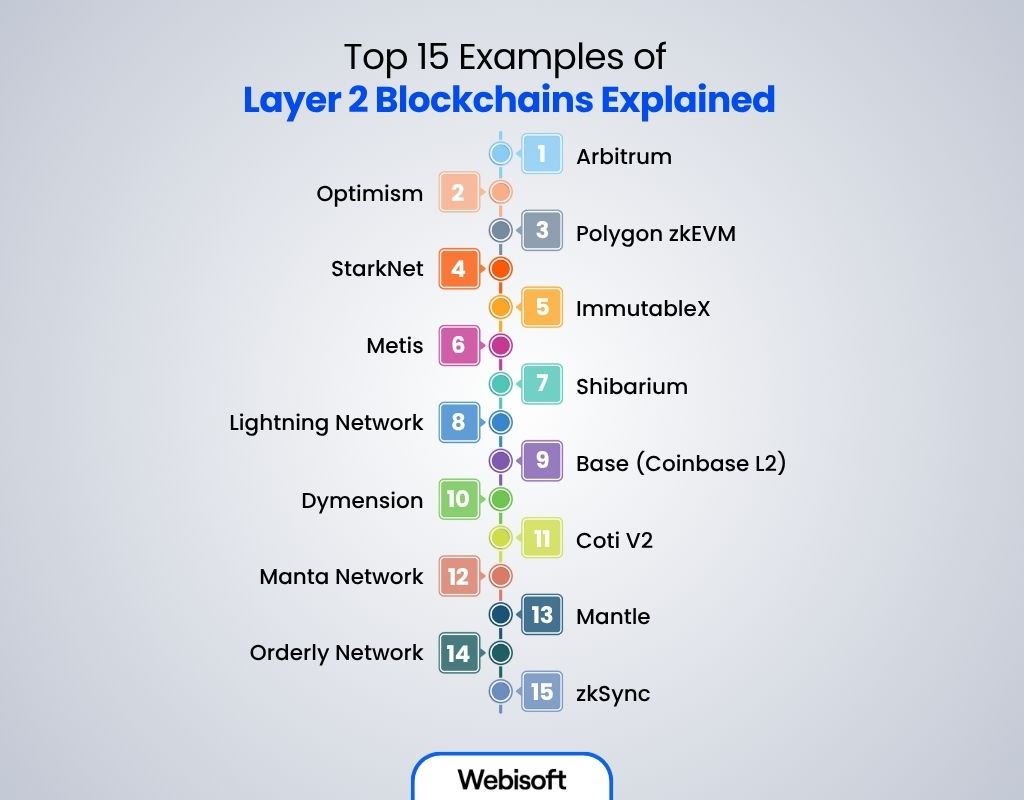
This layer 2 blockchain list shows 15 examples of layer 2 blockchains that are working to fix problems like slow speed and high cost. These examples help us understand how layer 2 blockchains make using blockchain easier and more useful.
But before going deep, here is a quick view by table:
| Project | Layer 2 Type | Main Blockchain | Scaling Method | Key Feature | Main Use Case |
| Arbitrum | Optimistic Rollup | Ethereum | Rollup + Fraud Proofs | EVM-compatible, secure | DeFi, NFTs |
| Optimism | Optimistic Rollup | Ethereum | Rollup + Fraud Proofs | Simple, developer-friendly | General dApps |
| Polygon zkEVM | zk-Rollup | Ethereum | Zero-Knowledge Proofs | Full EVM compatibility | DeFi, NFTs, gaming, enterprise dApps |
| StarkNet | zk-Rollup | Ethereum | zk-STARK Proofs | High scalability | DeFi, NFTs |
| ImmutableX | zk-Rollup | Ethereum | zk-Rollup | Gas-free NFT transactions | NFT minting & trading |
| Metis | Optimistic Rollup | Ethereum | Rollup + DAO tools | Built-in DAO infrastructure | DAOs & community dApps |
| Shibarium | Layer 2 (Optimistic/PoS) | Ethereum | Off-chain processing with PoS | Faster, cheaper transactions; token burning; PoS security | Speeding up and lowering cost of Shiba Inu transactions, supporting DApps and metaverse |
| Lightning Network | Payment Channels | Bitcoin | Off-chain channels | Instant, low-cost, scalable Bitcoin payments | Micropayments, fast BTC transfers, retail payments |
| Base (Coinbase) | Optimistic Rollup | Ethereum | Rollup + Fraud Proofs | Coinbase ecosystem integration | DeFi, NFTs, gaming, social apps, enterprise scaling, mass crypto adoption |
| Dymension | Modular Layer 2 | Cosmos, Ethereum, Solana, Aptos | Appchains + Hub | Custom appchains | Scalable interoperable apps |
| COTI V2 | Privacy-Focused Layer 2 | Ethereum | EVM-compatible Layer 2 | Garbled circuits for privacy | Private, fast, low-cost payments and DeFi apps |
| Manta Network | Privacy Layer 2 | Polkadot | zk-SNARK proofs | Privacy-preserving zkSNARKs, Universal Circuits, zkSBTs, modular architecture | Private DeFi, zk-enabled dApps, on-chain identity, cross-chain interoperability |
| Mantle | Optimistic Rollup | Ethereum | Rollup + Fraud Proofs | Fast, low-cost transactions | General dApps & NFTs |
| Orderly Network | Layer 2 DEX | Ethereum | Off-chain order book | Low fee order book trading | Powering decentralized trading: spot, perps, HFT, bots, and wallet integrations |
| zkSync | zk-Rollup | Ethereum | zk-SNARK proofs | Fast, cheap Ethereum txns | DeFi & NFT apps |
1. Arbitrum
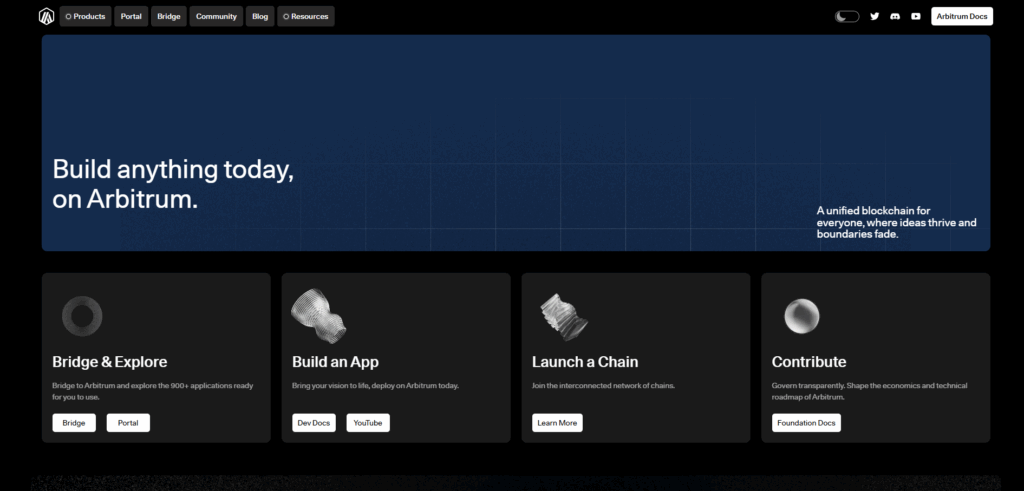
Arbitrum is an Optimistic Rollup Layer 2 solution for Ethereum. It batches multiple transactions off-chain and submits them as a single summary on-chain, assuming transactions are valid by default.
Core Technology:
- Optimistic Rollups: Trust transactions are correct unless challenged.
- Uses fraud proofs: If someone suspects invalid data, they submit a fraud proof to dispute it.
- Runs a virtual machine compatible with Ethereum smart contracts (EVM).
Advantages:
- Significant gas fee reduction (~10-100x cheaper than Ethereum mainnet).
- High transaction throughput.
- Compatibility with Ethereum tooling and smart contracts.
Use cases:
- DeFi applications (e.g., decentralized exchanges).
- NFT platforms wanting cheaper minting/trading.
2. Optimism
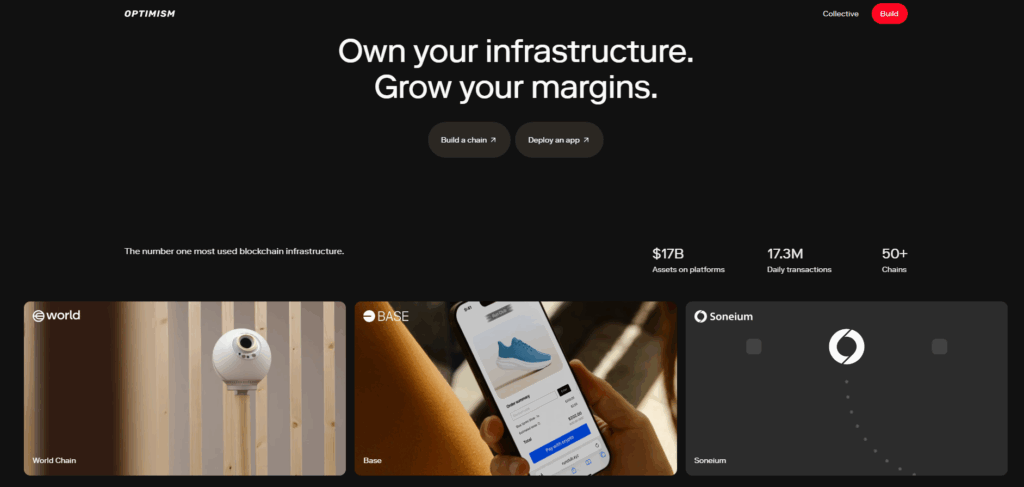
Optimism is another Optimistic Rollup Layer 2 solution that improves Ethereum scalability by batching transactions off-chain and publishing summaries on Ethereum.
Core Technology:
- Uses a simplified fraud proof mechanism similar to Arbitrum.
- Fully EVM-compatible, allowing direct deployment of Ethereum smart contracts with minimal changes.
- Implements gas-efficient design optimizations for rollup operations.
Advantages:
- Lower transaction costs and faster processing.
- High Ethereum compatibility, making developer migration easier.
- Open source, with active community support.
Use cases:
- Popular among DeFi projects like Synthetix, Uniswap.
- General purpose smart contracts needing scaling.
Whether you’re scaling DeFi tools or general-purpose dApps, Webisoft builds smart contract solutions designed to Layer 2 ecosystems like Optimism.
3. Polygon zkEVM
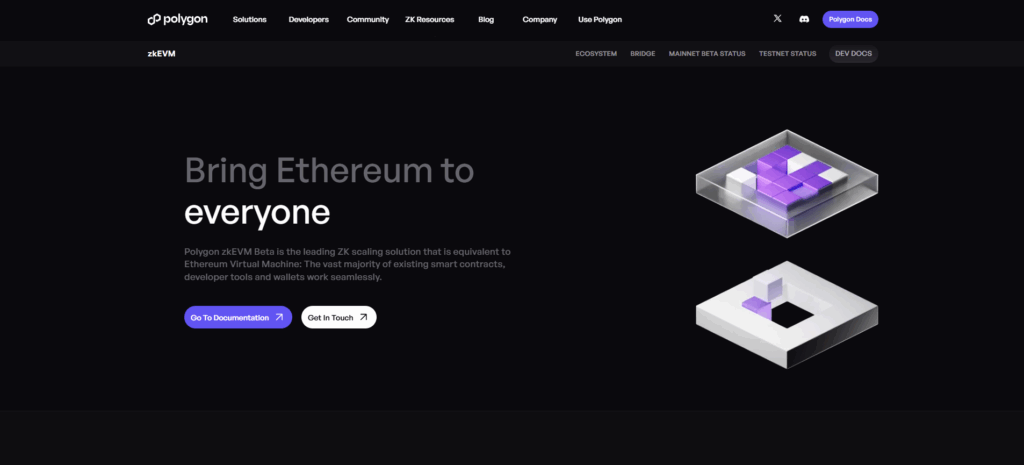
Polygon zkEVM is a Zero-Knowledge (zk) Rollup Layer 2 chain that generates cryptographic proofs (zk-SNARKs) to prove correctness of transactions before submitting them to Ethereum.
Core Technology:
- zk-Rollups: Instead of trusting transactions by default, zk-rollups generate mathematical proofs that prove all batched transactions are valid.
- zkEVM means it supports the Ethereum Virtual Machine, so existing Ethereum smart contracts run without modification.
- The zero-knowledge proofs provide fast and trustless validation.
Advantages:
- Instant finality, no challenge period needed (unlike optimistic rollups).
- Better scalability and lower fees than Layer 1.
- Ethereum compatibility for developers.
Use cases:
- High-throughput dApps needing fast confirmation.
- NFT projects and gaming require low fees and fast transactions.
4. StarkNet

StarkNet is a zk-Rollup Layer 2 solution for Ethereum built using STARK proofs, a type of zero-knowledge proof with strong security guarantees and no trusted setup.
Webisoft’s expertise with zero-knowledge proofs like STARK and SNARK helps bring secure, future-proof Layer 2 blockchain solutions to life for complex dApps and DeFi systems.
Core Technology:
- Uses STARK proofs (Scalable Transparent Arguments of Knowledge), which are quantum-resistant and scalable zero-knowledge proofs. No trusted setup.
- Runs a Turing-complete language called Cairo to write smart contracts optimized for zk-proofs.
- Posts STARK validity proofs on Ethereum for security.
Advantages:
- High scalability due to efficient zk-proofs.
- Strong security without trusted setup (unlike SNARKs).
- Designed for complex applications needing high throughput.
Use cases:
- Decentralized exchanges, payment systems, large-scale dApps.
- Complex DeFi protocols that require security and scalability.
5. ImmutableX
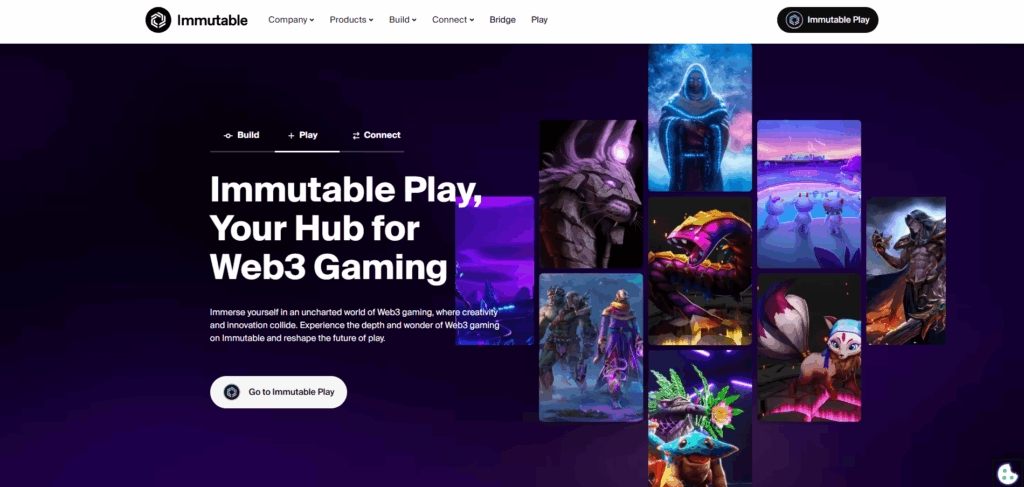
ImmutableX is a zk-Rollup layer 2 crypto solution specifically built for NFTs and gaming on Ethereum, enabling gas-free NFT minting and trading with zero-knowledge proofs.
Core Technology:
- Uses zk-rollups to bundle NFT-related transactions and produce validity proofs on Ethereum.
- Focused on carbon-neutral, gas-free NFT transactions.
- Integrates with Ethereum while enabling instant confirmation.
Advantages:
- Zero gas fees for minting and trading NFTs.
- High throughput supporting thousands of transactions per second.
- Environmentally friendly (carbon-neutral).
Use cases:
- NFT marketplaces, digital art platforms.
- Blockchain games require fast, free NFT interactions.
Planning to create an NFT platform on ImmutableX, start DeFi apps with zkSync, or grow your dApp using Arbitrum? Webisoft builds blockchain apps using the latest Layer 2 tools. Our team creates fast, safe, and easy-to-use blockchain solutions.
6. Metis
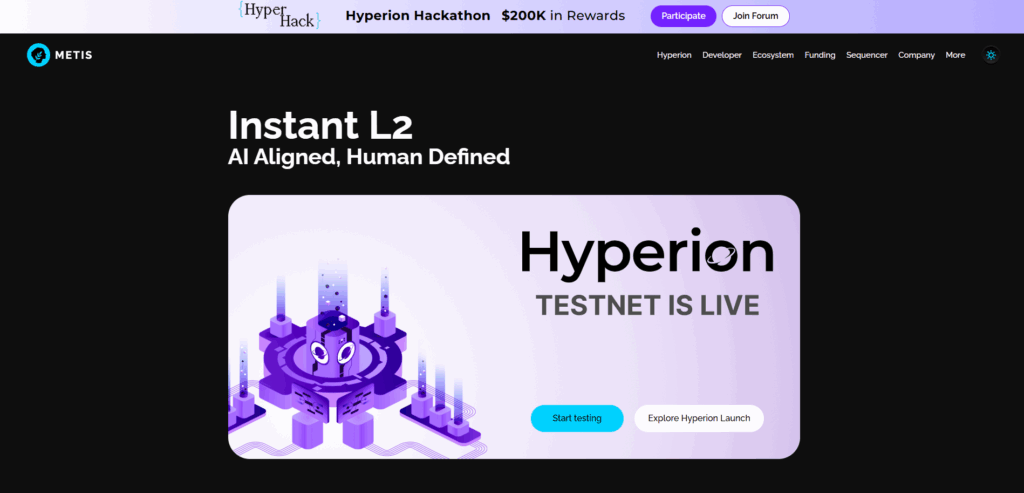
Metis is a Layer 2 scaling solution built using Optimistic Rollup technology focused on making decentralized applications easier to build and scale, especially decentralized autonomous organizations (DAOs).
Core Technology:
- Uses Optimistic Rollup to bundle transactions and post summaries to Ethereum.
- Provides additional tools for DAO management and governance built on Layer 2.
- Focuses on low gas fees and high throughput.
Advantages:
- Easy to deploy and manage DAOs with low transaction fees.
- Compatible with Ethereum smart contracts (EVM).
- Built-in support for user-friendly onboarding and operations.
Use cases:
- DAOs and decentralized projects that need scalable governance.
- dApps needing cheaper, faster transactions with community management features.
7. Shibarium
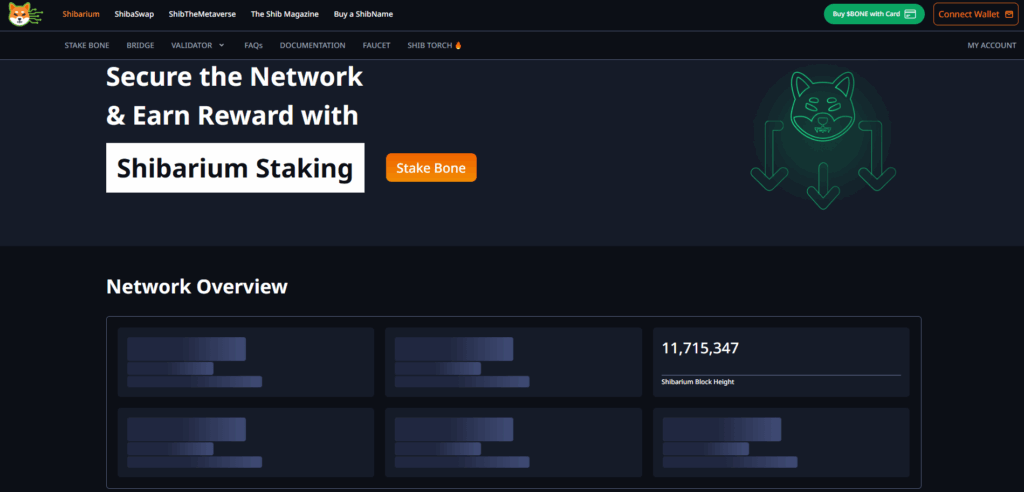
Shibarium is a Layer 2 scaling solution built for the Shiba Inu ecosystem to improve transaction speed and reduce costs on Ethereum. It acts like a fast, cost-effective “highway” for Shiba Inu transactions, easing congestion on Ethereum’s “roads.”
Core Technology:
- Operates as a Layer 2 network on top of Ethereum.
- Uses Proof-of-Stake (PoS) consensus for security.
- Processes transactions off the Ethereum mainnet to increase speed and lower fees.
- Incorporates a token-burning mechanism to manage SHIB token supply and reduce inflation.
Advantages:
- Faster transaction processing compared to Ethereum mainnet.
- Lower gas fees, making microtransactions more affordable.
- Scalable to support a growing number of users and applications.
- Secure due to PoS consensus and Ethereum anchoring.
Use cases:
- Supporting decentralized applications (DApps), smart contracts, and the Shiba Inu metaverse.
- Facilitating staking, governance, and NFT-related activities with tokens like SHIB, BONE, LEASH, and TREAT.
- Powering Shibaswap decentralized exchange and other ecosystem services.
8. Lightning Network
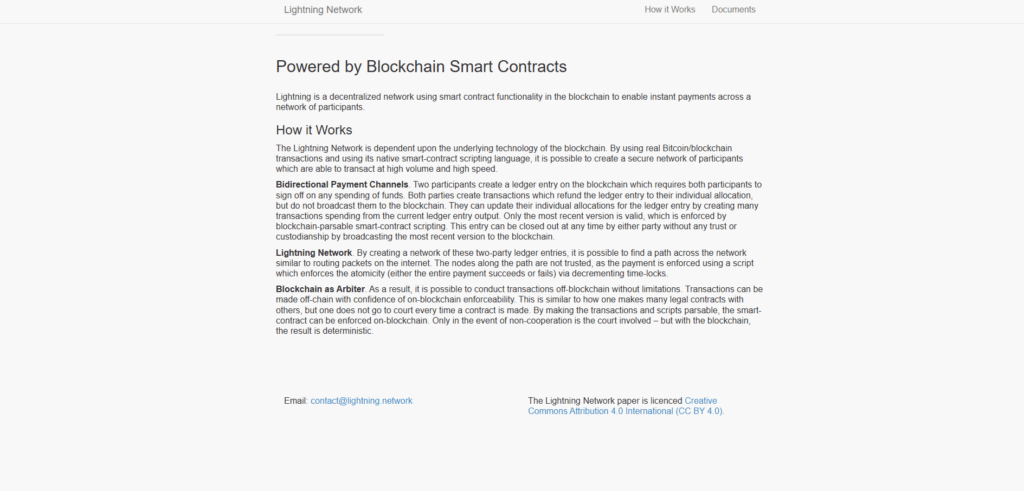
Lightning Network is a Layer 2 solution for Bitcoin, designed to enable fast, cheap, and scalable Bitcoin payments by creating payment channels between users.
Core Technology:
- Uses payment channels where two parties lock funds on Bitcoin’s main chain and transact instantly off-chain.
- Only the final balances are settled on the main Bitcoin chain, which helps reduce congestion.
- Supports multi-hop routing, allowing payments to pass through several channels to reach the recipient.
- Enables sending payments smaller than a satoshi (the smallest unit on Bitcoin’s main chain) by handling these tiny amounts off-chain, allowing micropayments that are impossible directly on-chain.
Advantages:
- Makes Bitcoin payments almost instant.
- Charges very low fees, making small transactions more affordable than on-chain payments.
- Keeps Bitcoin’s strong security and decentralization.
- Allows micropayments smaller than a satoshi.
Use cases:
- Everyday Bitcoin payments (like buying coffee).
- Microtransactions and tipping with Bitcoin.
9. Base (Coinbase L2)
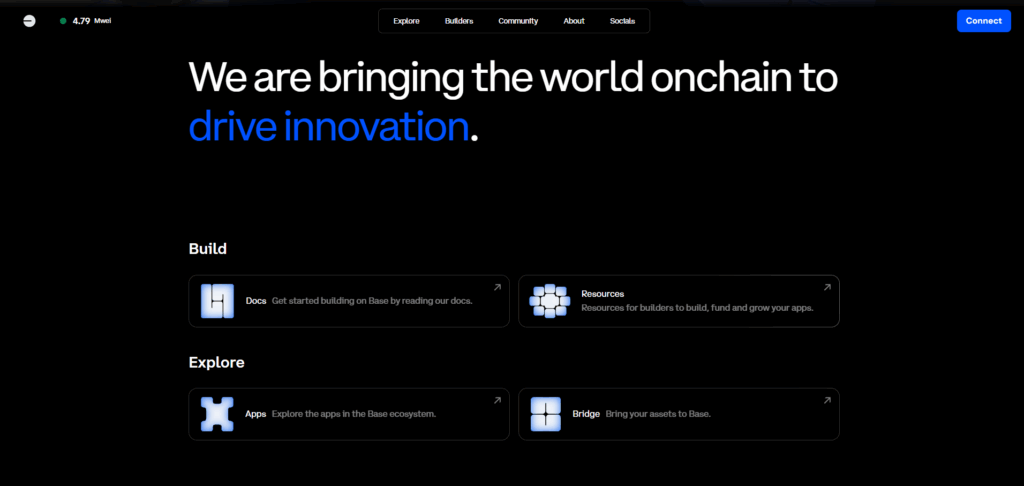
Base is Coinbase’s new Layer 2 Ethereum scaling solution built as an Optimistic Rollup to provide low-cost, secure, and developer-friendly infrastructure.
Core Technology:
- Uses Optimistic Rollup technology to scale Ethereum transactions.
- Designed for high security by leveraging Ethereum’s Layer 1.
- Seamlessly integrated with Coinbase’s ecosystem for easy user onboarding.
Advantages:
- Cheap and fast Ethereum transactions.
- Strong backing and integration with Coinbase.
- Developer-friendly, supporting standard Ethereum tools.
Use cases:
- DeFi applications, NFT platforms using Coinbase’s user base.
- New projects wanting easy access to Ethereum Layer 2 via Coinbase.
10. Dymension

Dymension is a Layer 2 scaling solution aiming to build a modular blockchain network with customizable blockchains (called appchains) connected through a central hub.
Core Technology:
- Uses a modular framework inspired by Cosmos SDK, enabling appchains optimized for specific use cases.
- Appchains can handle their own transactions off the main chain, increasing scalability.
- The central hub ensures security and interoperability between chains.
Advantages:
- High scalability by offloading workload to specialized appchains.
- Flexibility for developers to create custom blockchains.
- Cross-chain communication between appchains.
Use cases:
- Projects needing custom blockchain features but connected to Ethereum.
- Gaming, DeFi, and NFT platforms wanting scalability and interoperability.
11. Coti V2
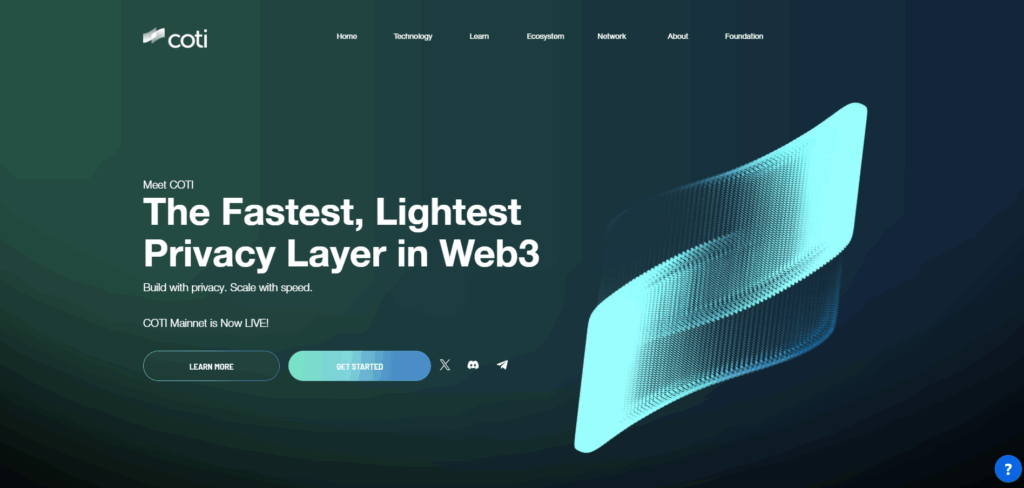
COTI started as a Layer 1 blockchain using a DAG structure but has now launched COTI V2, a new Layer 2 blockchain built on Ethereum that focuses on privacy and scalability. It is one of the notable examples of layer 2 blockchains.
Core Technology:
- COTI V2 is fully compatible with Ethereum (EVM-compatible), making it easy for developers to use existing Ethereum tools.
- It uses a special privacy method called garbled circuits, which lets multiple parties process encrypted data without revealing private information.
- This method is different and more efficient than common zero-knowledge proofs, especially for complex apps like decentralized exchanges.
Advantages:
- Keeps transactions very private and secure, which businesses like.
- Fast and cheap transactions on Ethereum Layer 2.
- Lets users share sensitive info only when needed, helping with rules for real-world assets.
Use cases:
- Businesses and institutions need privacy and to follow rules.
- Tokenized real-world assets with controlled access.
- Decentralized finance (DeFi) apps that need privacy for many users.
12. Manta Network

Manta Network is a privacy-focused Layer 2 blockchain built on Polkadot that uses zk-SNARKs to provide private DeFi and NFT transactions.
Core Technology:
- Employs zero-knowledge proofs (zk-SNARKs) to keep transaction data confidential.
- Built using Substrate framework for Polkadot compatibility.
- Focus on private swaps, transfers, and NFT minting.
Advantages:
- Strong privacy guarantees for DeFi users.
- Enables confidential asset transfers and trades.
- Compatible with the Polkadot ecosystem.
Use cases:
- Privacy-preserving DeFi protocols.
- Confidential NFT marketplaces.
Looking to build your own privacy-first blockchain or confidential DeFi platform? Webisoft specializes in custom Substrate and zero-knowledge solutions that put your users’ privacy first.
13. Mantle
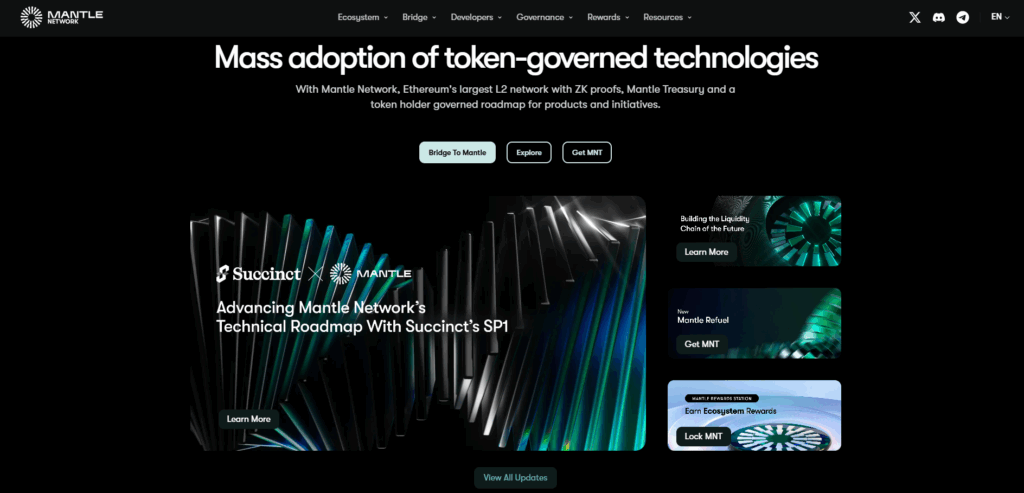
Mantle is an Ethereum Layer 2 scaling solution built with an Optimistic Rollup design focused on delivering fast, cheap transactions with Ethereum security.
Core Technology
- Uses an Optimistic Rollup mechanism to batch transactions and submit them to Ethereum with fraud-proof verification
- Built on a modular architecture separating execution, settlement, and data availability (using EigenDA for data storage)
- Offers developer infrastructure and Ethereum-compatible execution for easy dApp deployment
Advantages
- Low gas fees and high throughput enabled by off-chain execution and modular data availability
- Smooth developer experience with standard Ethereum tooling
- Powered by the MNT token, used for gas fees and governance
- Supported by major crypto organizations including BitDAO and Bybit
Use cases
- General-purpose DeFi and NFT applications
- Projects needing a scalable and Ethereum-compatible Layer 2 environment
14. Orderly Network
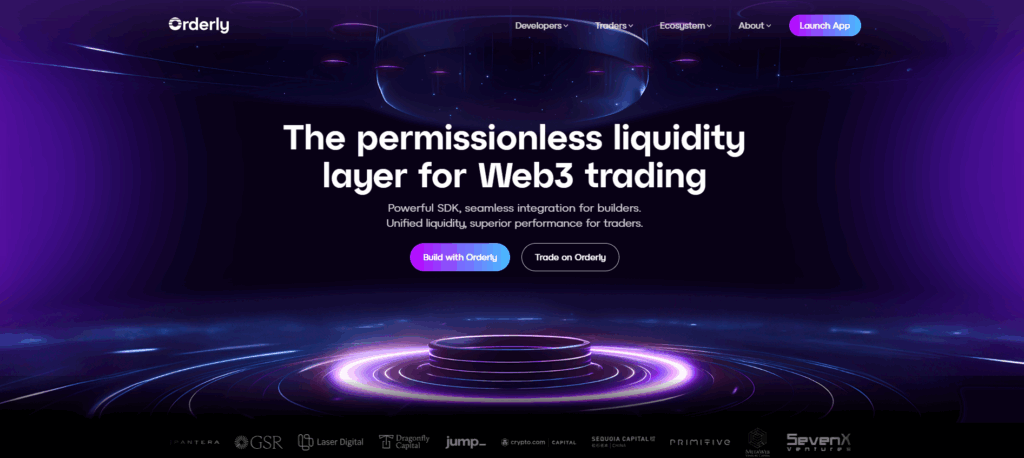
Orderly Network is a high-performance decentralized exchange infrastructure that operates across multiple blockchains. It combines a shared on-chain central limit order book (CLOB) with an off-chain matching engine, delivering the speed and efficiency of centralized exchanges (CEXs) while retaining the trustlessness of DeFi.
Core Technology
- Native asset deposits on multiple chains (NEAR, EVMs, Solana).
- A dedicated L2 chain built on OP Stack + Celestia handles transaction ledger.
- Executes trades off‑chain with on‑chain settlement.
Advantages
- Gasless trading (except deposit/withdraw).
- Unified order book across multiple chains for aggregated liquidity.
- Supports advanced order types and perpetual instruments.
- SDKs for rapid inclusion in dApps.
Use Cases
- Spot DEXs wanting CLOB infrastructure.
- Professional and institutional trading with margin/perps.
- Developers needing white-label spot/perp exchange capabilities.
15. zkSync

zkSync is a zk-Rollup Layer 2 scaling solution for Ethereum using zero-knowledge proofs to bundle and validate transactions efficiently.
Core Technology:
- Uses zk-SNARK proofs to verify batches of transactions off-chain.
- zkSync Era uses a compiler-based zkEVM variant, nearly EVM‑compatible with ongoing parity work.
- On‑chain transactions are optimistically instant, with zk‑SNARK confirmation completing within minutes.
Advantages:
- Extremely low gas fees (up to 100x cheaper than Ethereum).
- Fast and trustless transaction validation.
- Ethereum developer-friendly.
Use cases:
- DeFi applications, NFT minting and trading.
- Any Ethereum dApps needing cheap and fast transactions.
How Webisoft Builds Layer 2 Blockchain Solutions
Webisoft lays the foundation for the future of Web3 through Layer 2 innovations built for performance, sustainability, and growth.” Whether the project involves finance apps, NFT platforms, or other blockchain applications, Webisoft delivers full-cycle development from idea to launch.
Reasons to choose Webisoft:
- Expertise in Layer 2 technologies like rollups and sidechains.
- Custom smart contracts designed for specific needs.
- Integration with major blockchains such as Ethereum and Bitcoin.
- Focus on security and scalability for blockchain projects.
Explore our blockchain development services to see how we can turn your Layer 2 idea into reality.
Webisoft delivers high-performance Layer 2 blockchain solutions.
Let’s discuss your roadmap, schedule a free consultation today.
Conclusion
The 15 examples of layer 2 blockchains we covered show how these solutions work in practice and where they are applied. Understanding these Layer 2 blockchains is important for developers and businesses looking to build scalable and efficient blockchain applications today and in the future.
Want blockchain apps that run fast, stay safe, and cost less? Webisoft knows how. Our team works with Layer 2 blockchains to build projects that grow as you do.
Frequently Asked Questions
How does Arbitrum improve Ethereum’s scalability?
Arbitrum moves most transaction work away from Ethereum’s main chain. It groups many transactions into one and sends only a summary to Ethereum. This lowers the number of tasks Ethereum must do, so more users can use the system at the same time, with lower cost and quicker results.
Is Optimism built to reduce Ethereum gas fees?
Yes. Optimism runs transactions outside of Ethereum’s main chain. Only the final result is sent back to Ethereum. Because fewer steps are done on Ethereum, gas fees stay low for users who use Optimism.
What are the key differences between Optimistic Rollups and ZK-Rollups?
Optimistic Rollups accept transactions as correct unless someone finds a mistake. They wait a few days to give people time to check. ZK-Roll Ups use math proofs to show each transaction is correct right away. These proofs are strong and fast to verify, but the system is harder to build. Optimistic Rollups are simpler but slower to confirm.
Are Layer 2 networks faster than Ethereum Layer 1?
Yes. Layer 2 networks finish more transactions in less time. They do most of the work outside Ethereum and send only results to the main chain. This reduces waiting time and lowers the cost for each user.


